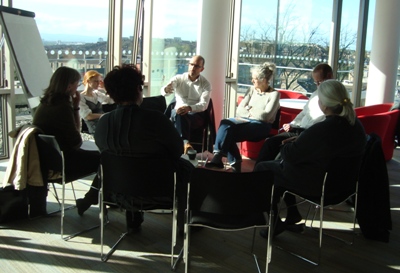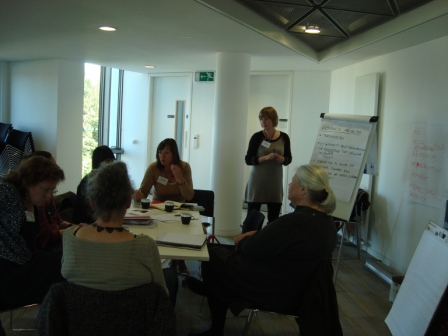The Real Thing meeting - October 7, 2011

Printable version of this text: Research Network The Real Thing Meeting
The second research network meeting was held at the University of Glasgow on 7 October 2011. It focused on a broad topic: ‘The Real Thing?’ The Value of Authenticity and Replication, an area of relevance to each of the research network strands. This theme builds on the successful symposium Art, Conservation and Authenticities: Material, Context and Concept, organized by Erma Hermens and Tina Fiske, held at the University in 2007 in conjunction with Icon Scotland.
As with all the Research Network meetings, the aim was to discuss current and future research in the field, with the objective of identifying research projects which could be taken forward.
As a starting point for the discussions, brief presentations were given by Brenda Rosseau, Supervisor of Research and Design at the Costume Center, Colonial Williamsburg Foundation and by Anne-Marie Deisser, a consultant in preventive conservation from Belgium who has worked in Nairobi and at the Kurdish Textile Museum, Iraqi Kurdistan.
Other participants included curators, conservators and researchers from Scotland and England and the USA. Dress and textile curators and researchers were well represented.
The following were key points and questions arising from the day, with a lot of the discussion focusing on the issues surrounding the digitization of collections:
- ‘The real thing’ is a cultural construct - it is mutable and depends on curatorial and conservation interpretations. There are different cultural and political approaches to authenticity - how much is our notion of authenticity a modern, Western approach?
- Is authenticity about reconstructing or respecting the original, or both? Is the ‘real thing’ the object itself, or the intangible value of the object?
- The knowledge we gain from objects is critical – how can we safeguard ‘the real thing’ and continue to provide access to objects even though they are problematic and resource-intensive. New protocols are needed – what do we do with the originals after digitization?
- Can we rediscover authenticity through replication? Costumed interpreters and ‘dressing up’, eg for children in museums, offer different learning experiences.
- Loss of knowledge in museum and archive collections (by eg loss of old labels, photo archives, etc) results in a loss of authenticity. How can we prevent this?
- Funding is currently being targeted towards digitization as an extension of access to museum collections. Does digitization attract more visitors to the museum, or does it replace museum visiting? We need qualitative and quantitative research, including surveys to engage with user groups, to understand the true value of digitization. Is there already research in this area? Is there research in other fields which has not yet been disseminated in the museum arena?
- What is the value of online information? Is it what people want or expect? Does it provide more than a veneer of access? Are museum systems of good enough quality?
- How sustainable is digitization in environmental terms?
We would like to extend very warm thanks to all the participants who made such significant contributions to the day’s discussions.
Conference 2012: The Real Thing
We had previously planned that our final conference, to be held on 6-7 December 2012, would have a modern materials theme. However we have now decided that the theme will be the same as that of our October network meeting: ‘The real thing’ and approaches to authenticity. We anticipate that this broader topic will be of interest to a range of researchers in textile conservation, dress and textile history, technical art history and related fields (including modern materials), and will stimulate some really interesting papers. A call for papers will be sent out in the near future and you will find details elsewhere on this website.
Frances LennardOctober 2011


